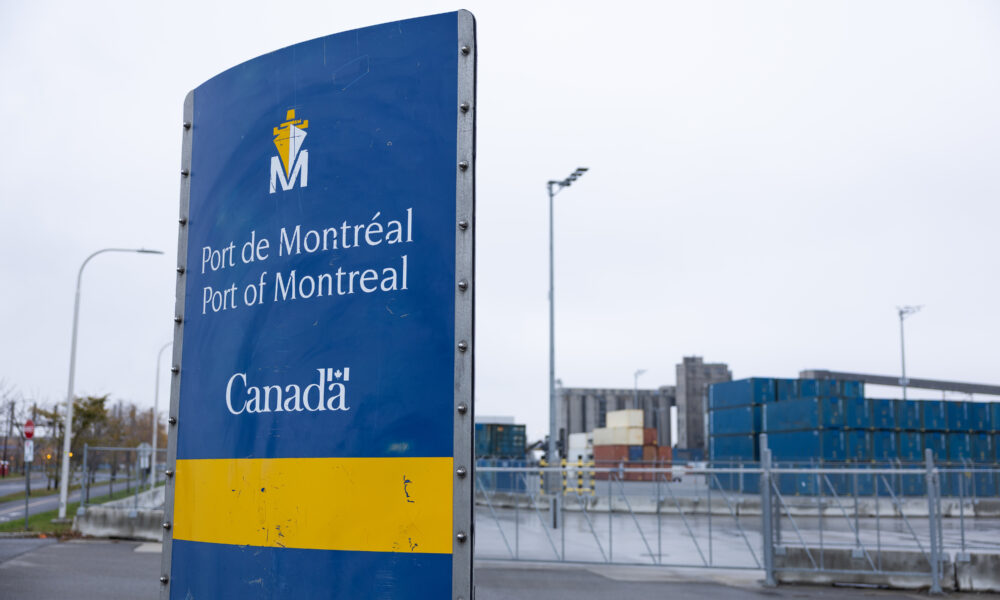The long-planned Contrecœur Terminal Expansion Project aims to expand the Port of Montreal’s shipping container capacity by 60 per cent by building a new port 40 kilometres away from Montreal. At its core, this expansion is a good idea: It will create jobs and stabilize Canada’s American-skewed international trade dynamic. However, residents worry it will harm their quality of life, local ecosystems, and the broader environment, while others claim its increase in size is unnecessary.
Critics’ ecological concerns, as well as their concerns about quality of life, are valid. Locals are the ones who will have to live with the consequences of this massive development. Prime Minister Mark Carney must give affected communities a voice in the planning process rather than steamrolling them. Incorporating community consultation into the expansion project will improve the benefits and sustainability of the port, while simultaneously strengthening public trust in government and its projects.
Canada’s economic future looks uncertain after President Donald Trump abruptly ended trade negotiations and promised increased tariffs as retribution for an anti-tariff advertisement aired by Ontario Premier Doug Ford. Canada’s economy has historically relied on the U.S., but that trust has recently been frayed, meaning that it is fiscally prudent for Canada to diversify its trading portfolio.
Opponents to the legislation argue that the port expansion violates Bill C-5—which aims to increase Canadian economic autonomy by facilitating free trade between provinces—since it makes Canada’s economy less autonomous and more dependent on international trade. However, by broadening capacity for maritime trade across the Atlantic, the port expansion critically lowers dependence on one specific and increasingly unpredictable trading partner: The U.S. Even though the port expansion will bring external competition for Canadian producers, it boosts Canadian autonomy by diversifying trade partners to offer a safety net to Trump’s flip-flopping policies. Bill C-5 explicitly permits exceptions for certain projects deemed to be in the national interest of Canada, and this plan meets that criterion.
However, this project poses environmental concerns for locals: Over 1,000 cubic litres of river water will be used each day to clean machinery on-site, and it is very possible that dredging may harm the local copper redhorse fish. While minister of Environment and Climate Change Julie Dabsuran has approved the original plan under strict conditions, involving environmental impact mitigation and collaboration with some First Nations communities, the government’s environmental responsibilities cannot end there. It must continue to incorporate input from local residents about the new changes.
One of the most blatant instances of neglect of community feedback is the project’s abrupt decision to allow construction work to continue late into the night. Instead of tailoring the project to address residents’ concerns, preliminary work began on the site almost immediately after the end of the comment period last month, sending a message to locals that their input is a low priority.
Residents’ environmental concerns about the port expansion are intimately tied to questions about Canadian autonomy. Some residents highlight that the port contributes to an economy fueled by international trade, which contributes more to global warming. However, an economy oriented towards international trade //can// coexist with a healthy environment. Surprisingly, studies have shown that trade within North America is actually more carbon-intensive than trade across the Atlantic or Pacific. Most goods traded between the U.S. and Canada are transported into Canada on trucks, which emit far more carbon than ships do. To be clear, however, a massive expansion in shipping capacity will undoubtedly increase emissions in the shipping sector; a better alternative would be a smaller expansion that accommodates a growing shipping sector without creating surplus capacity.
Community concern about the effects of the port expansion on Canada’s sovereignty and the global environment is misplaced. However, local issues like water pollution, habitat destruction, and noise disturbance are real risks that the project planners have not clearly accounted for and have poorly communicated to residents under time pressure from the government. Carney’s administration must not let its ambition get in the way of due process. A smaller expansion could address constituent concerns by lowering water usage, requiring fewer construction hours, and curbing greenhouse gas emissions.
Whatever the compromise the people of Contrecœur and the government of Canada end up finding, the best solution will ultimately be one reached through genuine collaboration.









